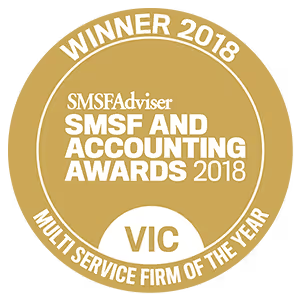With lots of hard work and plenty of good planning, a business with well-run operations will eventually generate excess cash. As a business owner, one of your key roles should be to allocate capital. Put simply, allocating capital means solving the problem of "where best to put my money?".
This problem seems like a great one to have, but it is actually a very important decision in the management of your business and your personal wealth. With many competing interests and priorities, it can be a tricky business knowing exactly where to invest that hard-earned money.
Liston Newton Advisory is in the business in giving accurate, quality business advice. If you need to know where you should be investing business profits, contact us for a free financial strategy session.
What should I do with my business profits?
To best answer this question, start by taking a close look at your numbers and consider where you’re currently at in your business journey.
For example, let’s say your business is growing steadily, with sales of $1,000,000 this year. After you pay all expenses and wages, you’re left with $200,000 (i.e 20%) net profit.
For many business owners, the first instinct is often to quickly take that profit, either by spending it or purchasing an investment property or share portfolio.
Yet while diversifying into other assets can be a smart long-term wealth creation decision, your first consideration should be whether reinvesting profits back into your business could help you improve on your 20% profit margin. If the answer is yes, then that’s the best place to be investing business profits.
Why reinvest back in your business?
Achieving a high return through traditional investment is often extremely difficult. The share market’s average annual return over 25 years is just under 11%, and it’s a similar story when it comes to the property market.
As a business owner, you’re likely not an expert in either of these areas — but crucially, you are an expert when it comes to running your own business. For that reason, it can often make much more sense to put your money where your nous is.
Investing back into your own business (otherwise known as ‘bootstrapping’) can be a smart option — but this isn’t just a matter of directing funds back into your business bank account. You need to know where best to spend the cash, in order to give you the best opportunity to improve on your existing profit margin.
Here are some great ways you can reinvest business profits:
- Improving sales strategies and train new staff
- Investing in new marketing campaigns and collateral
- Buying new equipment to create better efficiencies in your service or product delivery
How to choose where to reinvest
.jpg)
The only way to know is to measure these parts of your business. You need to measure things like staff productivity, sales staff targets, the return on investment for your marketing spend and the potential for increased profitability from new technology.
This will help you determine the outcome if you decided to allocate more money to one of these areas.
Having an in-depth understanding of the numbers that drive your business will arm you with the knowledge to make better informed decisions on your potential for growth, and the associated risks and potential returns of reinvesting your profits into your business.
Borrowing for accelerated growth
Using your profits to grow your business is one way to allocate capital. But another strategy that can add fuel to the fire is called debt funding.
Let’s say you have the opportunity to purchase another similar business for $500,000, which has annual sales of $500,000. The bank will allow you to borrow 50% of the value of the business ($250,000 of debt) at 6% per annum, and you’ll need to contribute the other half yourself ($250,000 of cash equity).
You’ve done your due diligence and know you can maintain a 20% profit margin when you integrate the new business into your existing operation. So should you go ahead with the deal? Again, let’s look at the numbers.
Debt funding: an example
You’re purchasing $500,000 of new sales.
Assuming you can maintain your profit at 20%, the new business would generate $100,000 of additional profit each year (before interest).
The loan is costing you $15,000 in interest per year ($250,000 @ 6%).
So your net profit is now $85,000.
You invested $250,000 in cash (equity).
Your return on equity is ($80,000 / $250,000) = 32%
How does that compare?
Looking at ratios like return on equity (ROE) helps you determine what you should do with your money. Consider whether you could get a 32% annual return on your money by taking your profits and investing them in property or shares.
As your business matures, there may come a time when reinvesting money back into the business no longer gets those types of returns. That's when you should be looking elsewhere.
So is debt funding for you?
As mentioned, debt funding is like pouring fuel on a fire. It can really accelerate growth and magnify your profits – but just like fuel, it also has the potential to cause damage.
If it’s not managed correctly, too much fuel can overwhelm a business and burn it to the ground, so it’s important to have a solid grasp of the risks and rewards. As the business owner, it’s your role to find the best opportunities, avoid the potential pitfalls and allocate the right amount of cash and debt to generate sustainable profits.





.jpg)
